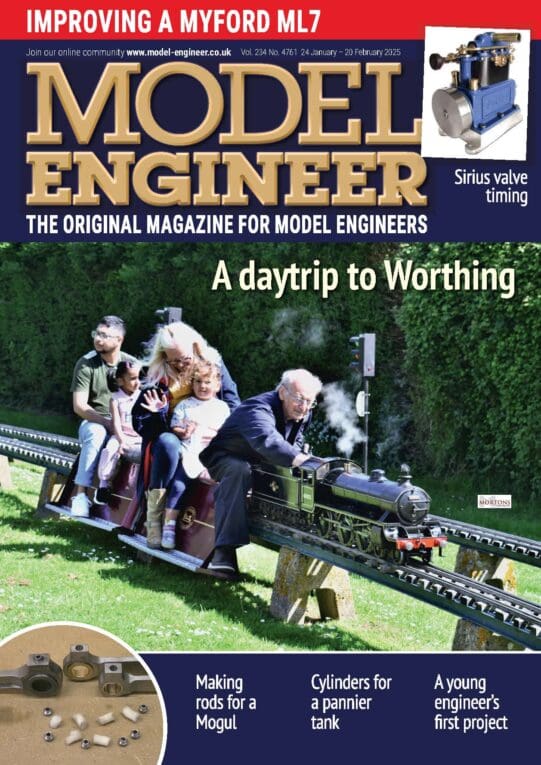Welcome Graham!
Can you explain what type of work you intend doing? If your workshop celebrates the past, learning Imperial and leaving the lathe alone may be the right answer! It’s because many model steam locos are built from traditional Imperial plans and converting them to metric is error prone hard work; easier to do the job the old-fashioned way! Likewise, repairing and restoring legacy machinery is easier with Imperial tooling. Otherwise living in North America favours Imperial, though it’s fading there too.
I do experimental work, where the Imperial system is a hissing and an abomination. As supporting metric in my workshop is a priority, I wouldn’t buy an Imperial Myford, because I would have to waste time and money converting it.
In practice, metric lathes can do most imperial work, and vice-versa. Just slowly! When cutting to length or diameter, do the maths (1″ is 25.4mm”), or ignore the dials and measure with a caliper or micrometer. Best of all, a DRO measures accurately in both systems and reduces the risk of backlash errors.
The main exception is screw-cutting, which, again depending on the work, may not matter much. It’s because small-threads are almost invariably cut on the lathe with taps and dies, not with a single-point tool or insert. When taps and dies are used, they impose their system, and the lathe’s lead-screw, gearbox, or change-gears are irrelevant. Single-point screw-cutting is wheeled out for threading large diameter, maybe once in a blue moon. A threading gearbox saves time, but they only pay if a lot of different threads have to be cut quickly. Could be a gear-cutting gearbox is an expensive accessory, another complicated part to go wrong, when change-gears might do most jobs just as well. So Graham, what threads do you expect to cut? If the answer is lots of different metric, have a look at Myford’s website, search for conversion kit, and then ring them for advice. If the answer is occasional threading, ask here about 63 and 127 toothed gears.
How much of a PITA doing metric work on an imperial lathe is, or vice versa, depends on volume and complexity. The pain is anything between barely noticeable and unacceptable.
Not unusual for beginners to be unclear about what they intend doing! I was. Model Engineering is a broad-church, everything from tiny watchmaking to full-size repair. My advice to Graham is to put his metric worry on the back burner for the time being, and start by learning to drive the lathe. Does it work properly? Problem with second-hand is condition; is Graham’s machine ‘as-new’, or is it badly worn, with damaged or missing parts? Best way to find out it to use it – nothing identifies problems faster than cutting metal. Doesn’t matter at this stage if the lathe is imperial or metric – they cut in exactly the same way. Learning to drive a lathe requires the owner to select a few projects, and what he chooses often points to the future. Spend six months learning, and then decide about converting the lathe.
Other newcomers might learn a lesson from this. Although Myford’s have a well-deserved reputation that doesn’t mean a particular model will meet your needs! Many older British lathes were made at a time when great-grandad failed to comprehend the world was going metric. They were wrong. Imperial is slowly disappearing, for example I don’t believe fractional inch steel plate, once a standard stock item, is made anywhere now. In 2024, metric dominates, making it likely that a newcomer to the hobby might accidentally buy an awkward to them Imperial only lathe. Far Eastern and later British lathes do better; lathe designs after about 1955 tend to major in one system, whilst also providing reasonable support for the other. My metric WM280 happily cuts 21 Imperial threads.
Dave
Martin Kyte.









